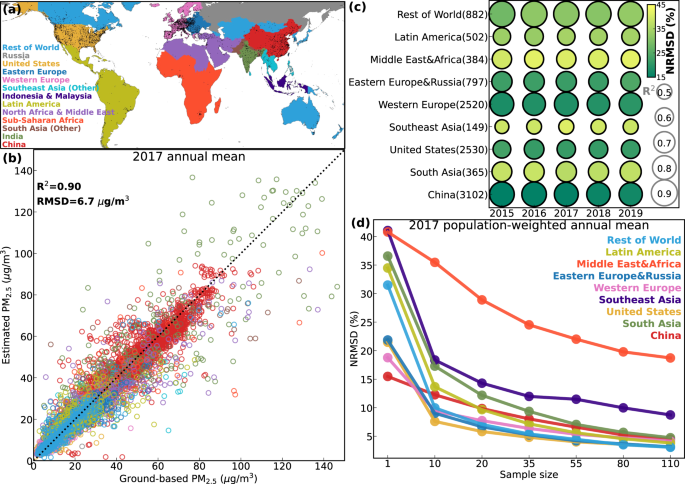2023-09-06 ワシントン大学セントルイス校
◆中国の空気品質管理が大きな影響を与え、2011年から2019年までの期間に1.1百万人以上の早期死亡を減少させました。しかし、PM2.5による早期死亡はまだ数百万人が発生しており、PM2.5曝露の持続的な低減が必要です。
<関連情報>
- https://source.wustl.edu/2023/09/world-can-now-breathe-easier/
- https://www.nature.com/articles/s41467-023-41086-z
世界の微小粒子状物質による大気汚染の傾向の逆転 Reversal of trends in global fine particulate matter air pollution
Chi Li,Aaron van Donkelaar,Melanie S. Hammer,Erin E. McDuffie,Richard T. Burnett,Joseph V. Spadaro,Deepangsu Chatterjee,Aaron J. Cohen,Joshua S. Apte,Veronica A. Southerland,Susan C. Anenberg,Michael Brauer & Randall V. Martin
Nature Communications Published:02 September 2023
DOI:https://doi.org/10.1038/s41467-023-41086-z

Abstract
Ambient fine particulate matter (PM2.5) is the world’s leading environmental health risk factor. Quantification is needed of regional contributions to changes in global PM2.5 exposure. Here we interpret satellite-derived PM2.5 estimates over 1998-2019 and find a reversal of previous growth in global PM2.5 air pollution, which is quantitatively attributed to contributions from 13 regions. Global population-weighted (PW) PM2.5 exposure, related to both pollution levels and population size, increased from 1998 (28.3 μg/m3) to a peak in 2011 (38.9 μg/m3) and decreased steadily afterwards (34.7 μg/m3 in 2019). Post-2011 change was related to exposure reduction in China and slowed exposure growth in other regions (especially South Asia, the Middle East and Africa). The post-2011 exposure reduction contributes to stagnation of growth in global PM2.5-attributable mortality and increasing health benefits per µg/m3 marginal reduction in exposure, implying increasing urgency and benefits of PM2.5 mitigation with aging population and cleaner air.



